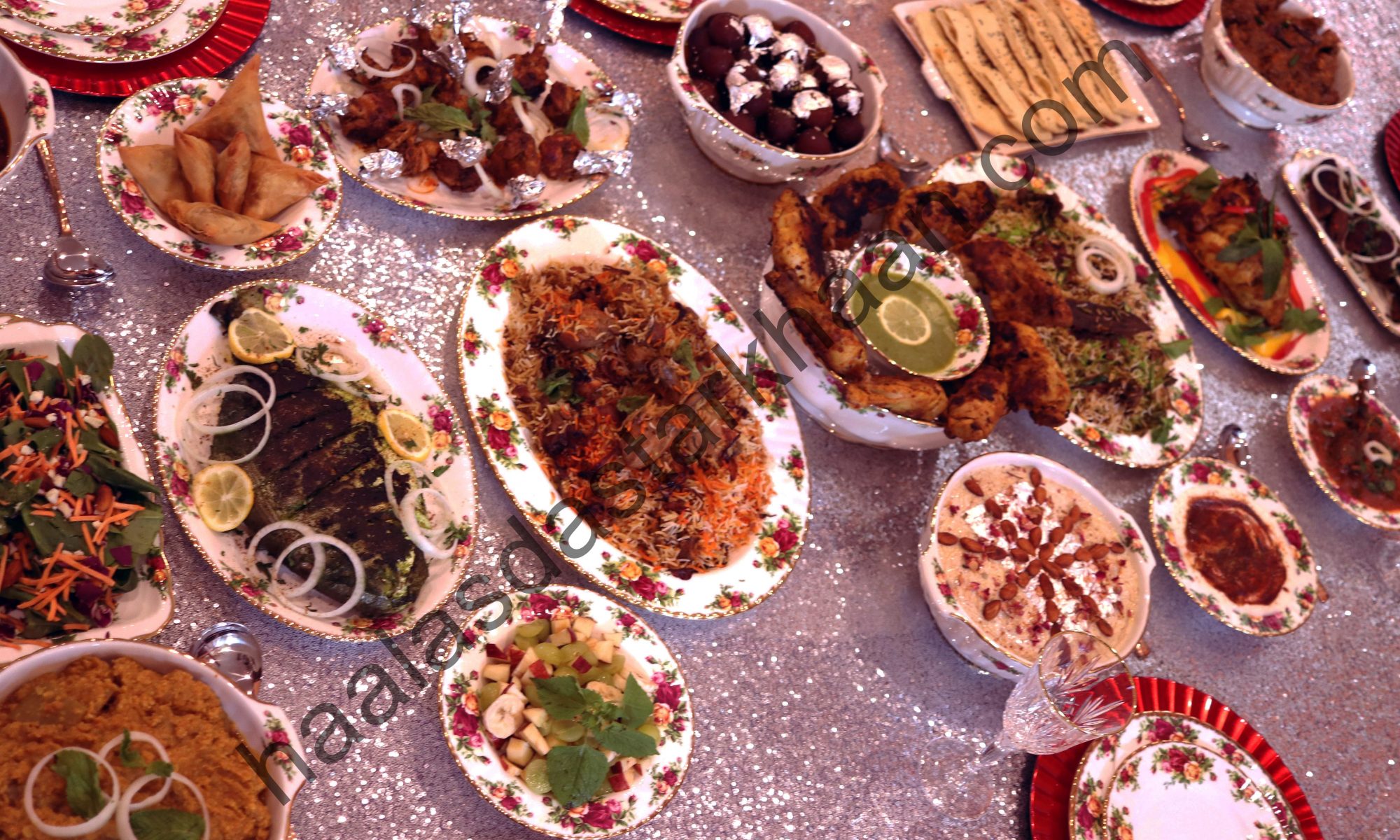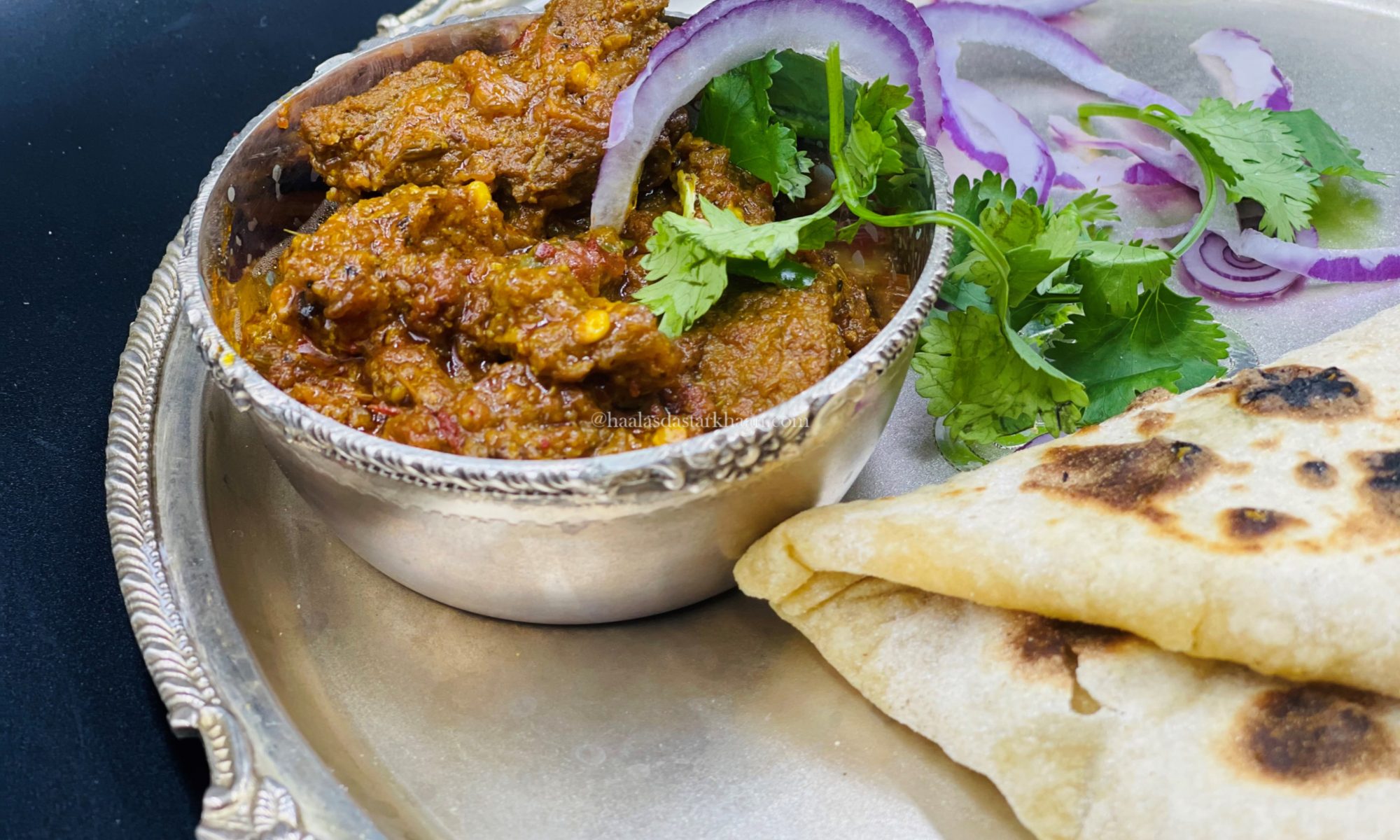
Laal Maas is a dish from my home town, Jodhpur. The dish mainly originated from the Rajput Royal families who’d proudly cook the animals they have hunted or cook for their families at leisure hours and this used to be their specialty.
Laal Maas is still very popular and from the royal homes has reached various Jodhpur restaurants who make this dish in amazing ways, adding their own flavors while keeping the recipe close to the original one. This is my version of what I gathered from the flavors I had tasted at different places. A lot of times, people from other regions feel that Laal Maas is a local cuisine cooked in every household that enjoys nonvegetarian food, like the Muslim community. Sadly, that ain’t true. The fact is that this dish is barely made in any Muslim home and is solely a recipe from the Royal Cuisine of Jodhpur, Rajasthan.
I usually boil the meat chunks before I start cooking the curry. I feel that reduces the cooking time for mutton and also helps the spices soak in more easily, making the mutton juicier and spicier.
This curry is made using Ghee, oodles of ghee. Rajasthani love using Ghee for all their lavishly cooked food and we take a lot of pride in that, but I mixed up little oil with Ghee because these days it’s tough to cook and digest pure ghee, but if you are daring enough you can always choose to cook using only ghee and similarly if you are a health freak like Mr. Parveez, you can cook using only oil and just add a teaspoon of Ghee for the fragrance.
This recipe is pretty easy and can be easily made by beginners and the flavors are super delicious.
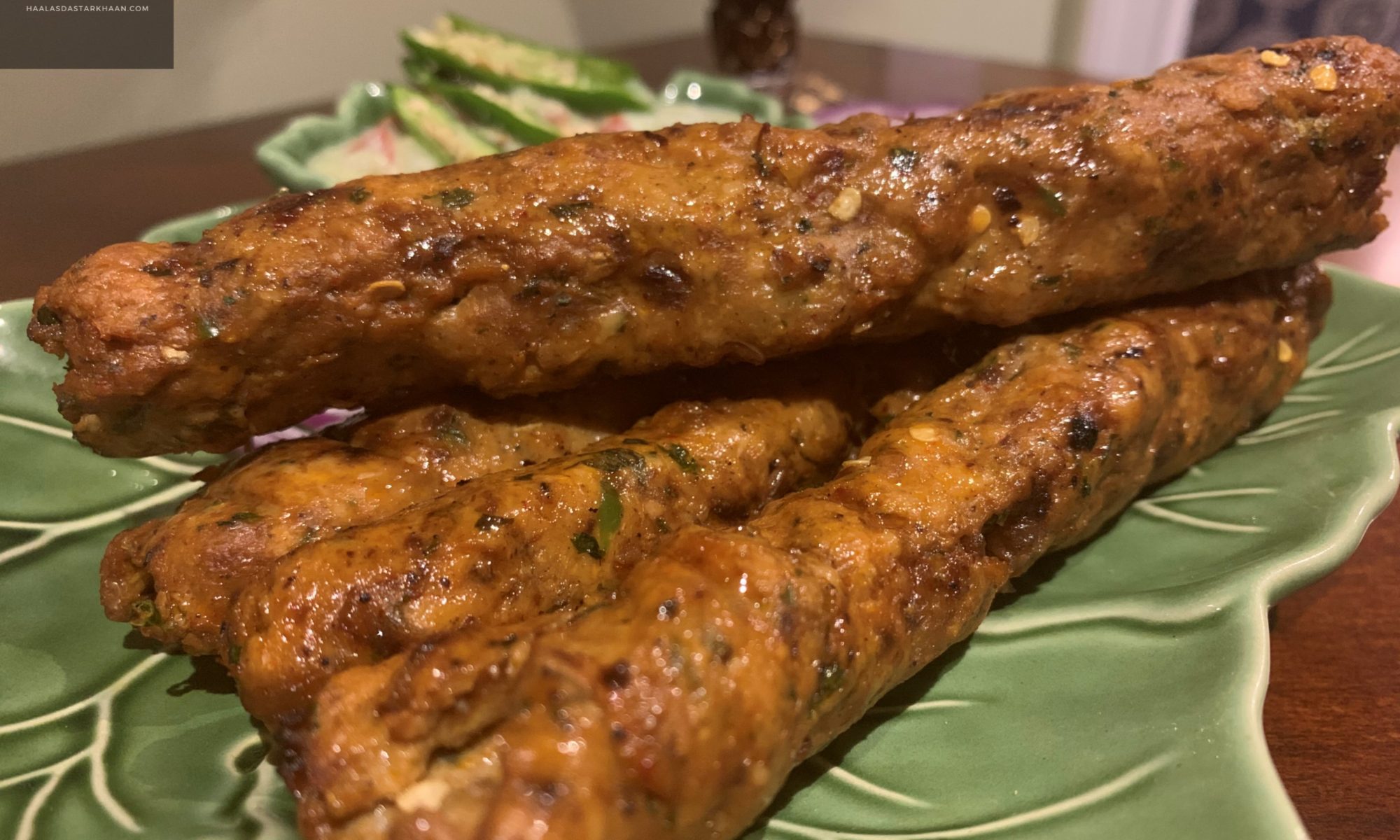
Reshmi is an Indian word used for “silk”. Reshmi Kebab are silk textured, soft, juicy and delicious kebabs made with minced meat or chicken from the Mughal Kitchen. As the name depicts, Reshmi Kebab is juicy succulence of meat added to the skewers. The meat has to have a perfect texture thanks to the marinade in which it is soaked.
The problem with seekh kebab that usually happens is that it goes dry if the marinade isn’t good enough. A good marinade for seekh kebab cannot be too saucy or it will be hard to hold the seekh shape and it cannot be too dry or the seekh would not taste so good. As much as you have to be careful about the ingredients that go into the dish and a lot of times, I see people messing it up with the seekh breaking mid way while being cooked, the process is simple. A few tricks and you are good to go.
In this recipe, I added a paste of fried onions. Onions by itself release water when added to a dish so the best way to add onions to a dish when you want the flavor and fear the dish getting excess moisture is by frying the onions. The process of frying onions dries up the moisture. The fried onions also tend to get a little sweeter so, make sure you adjust the spices accordingly. When you grind the coriander leaves with mint leaves and chilies, make sure that you don’t add too much water. In fact, add water a drop at a time and avoid if not needed. The green paste doesn’t really have to be a paste, it can be roughly chopped paste.
If you follow the recipe properly, you will be able to achieve a perfect seekh kebabs and trust me, these ones are to die for. They are perfect, juicy and absolutely delicious. Enjoy!!!
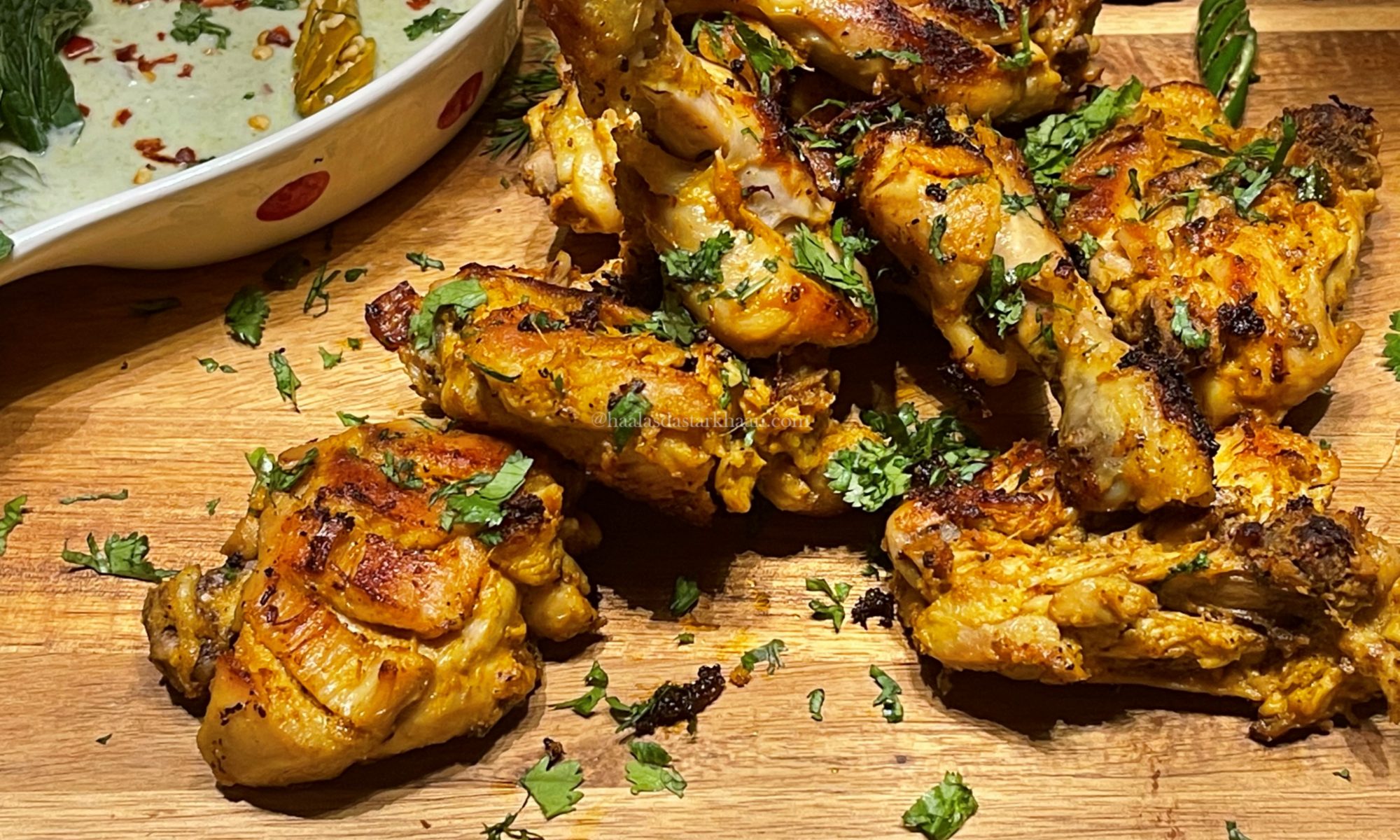
The origin of Kalmi Kebab is from the Mughal era, of course, I mean where else will Kebabs so delicious can come from except for the Mughals. The Mughals introduced Kebabs to the Indian cuisine and when their Kebab making skills were fused with the spices of India to give super delicious and scrumptious dishes. This dish now is very popular in Hyderabad and is very prodly an addition to the Nizam cuisine, which of course is greatly influenced from the Mughals.
Tangdi Kebab are everyone’s favorite. Tandoori kebabs are pretty popular amongst people and mostly when we think of Tangdi kebab, the first kebabs that come to mind are the red tandoori kebabs.
With the huge variety that Chicken offers in the “World of Kebabs”, these happen to be one of the easy ones and definitely something beginners can easily cook to impress. The kebabs need marination time, overnight is not needed, 3 hours are enough. If you are running out of time, marinate and wrap them up with cellophane or a tight lid and leave them in the freezer for 15 – 30 minutes. Not any longer or the chicken pieces would freeze.
The chicken can be cooked in the oven as well, but going through the traditional way for cooking Kalmi Kebab, I decided to pan fry them. With pan frying, the besan cooks properly adding crunch to the chicken, which otherwise in the oven to take longer. Again, you might prefer the oven and if you do, its 350F/180C for 20 minutes each side.
As I said before, the dish is great for beginners and super easy to make. If you are a great cook, this dish makes an excellent side dish to your party and the flavors show great efforts. Hope you enjoy making it as much as I did.
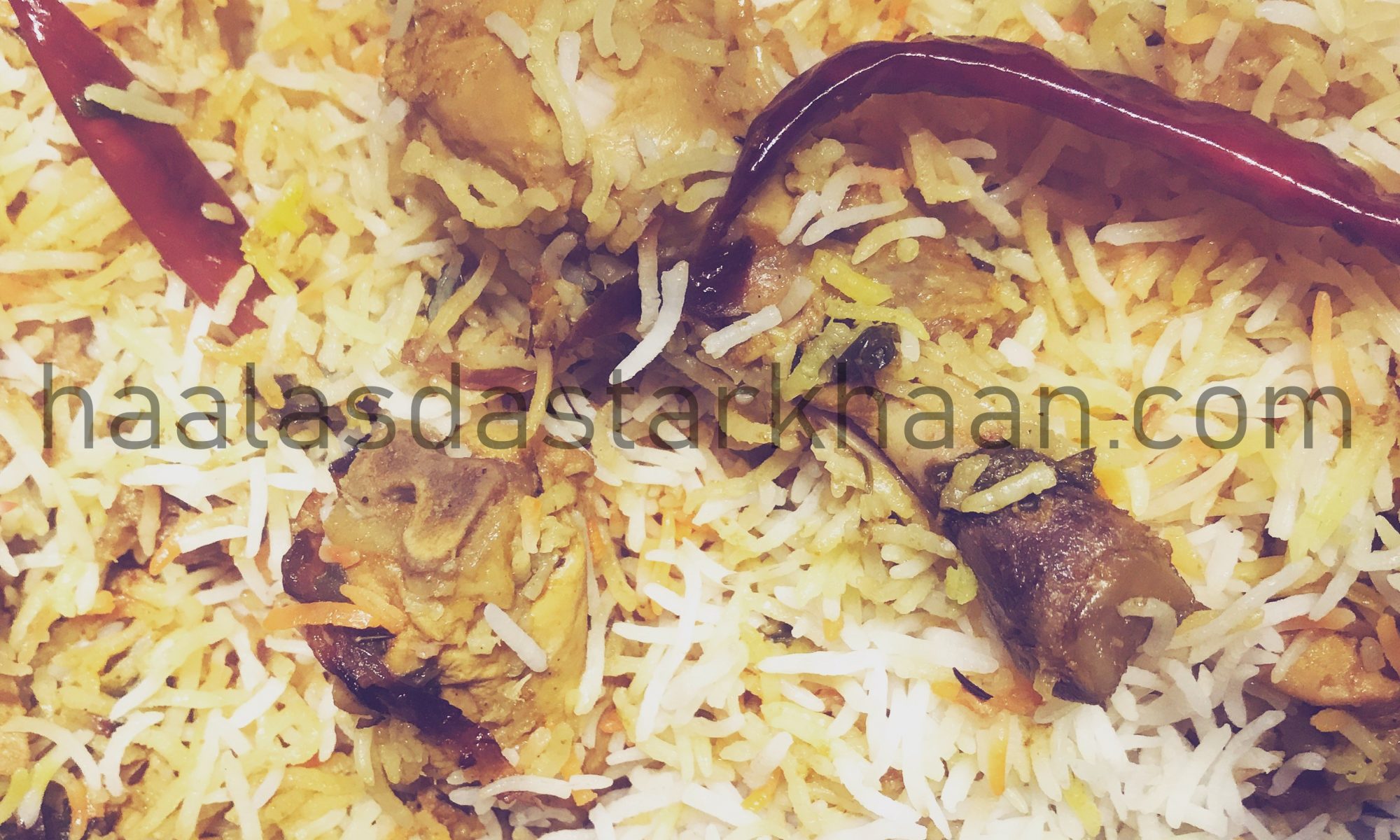
A recipe close to my heart. Rajasthan is my home state. The land of Marwar is popular for its beautiful and sweet spoken people along with the gorgeous forts and palaces. Its also known for its beautiful colors that can be easily seen in the attires and things people use. We proudly call it our “Rangeelo Rajasthan”.
Rajasthan is mostly popular for its vegetarian food but little do people know that Non vegetarian food of Rajasthan is not only very popular between Non vegetarians but also portrays the love for cooking from the Royal Palaces. Most kings in Rajasthan have loved to cook in their leisure time and they enjoy cooking the traditional Marwar recipes that have passed on to us from generations.
Rajasthani Malai Biryani comes in from the kitchens of the Mughals and clearly shows the bond of brotherhood and relationship shared by Rajputs and Mughals. When Princess Jodha married the Great Mughal Emperor Akbar, the Mughal cuisine was all set to merge like the traditions and fesivals of the two different faiths. This dish uses a lot of chili. Well, that’s what Rajasthan is popular for, but to calm it down it uses cream or malai. Mughals used a lot of cream and dry fruits in the cuisine and most dishes that use a lot of cream or saffron are actually a gift from the Mughal Era. In fact, its surprising how many dishes in Persia or Arab countries sound and look similar to Indian/pakistani cuisine and it clearly shows how the foods welcomed the merge and till today we enjoy and take pride of what our history gifted us.
